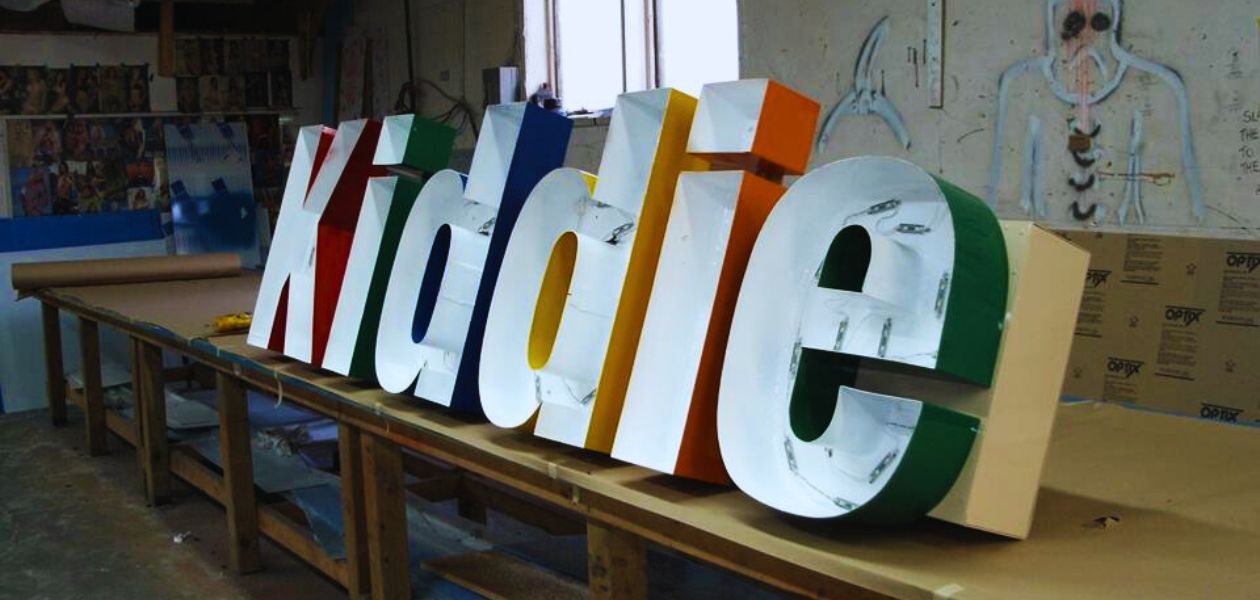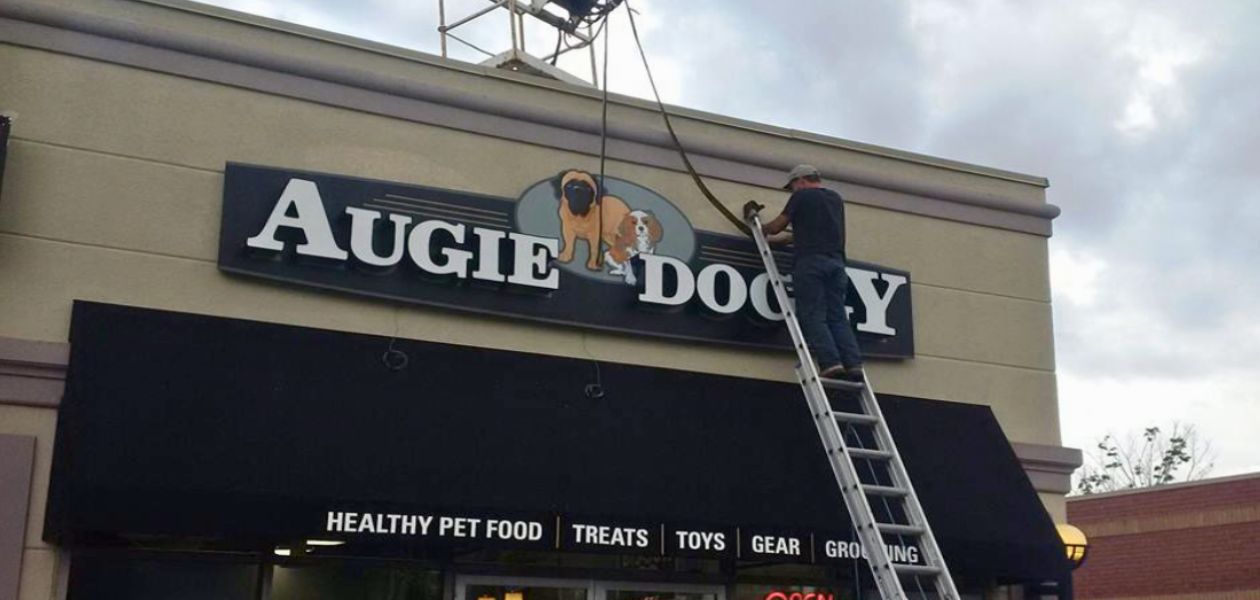What Factors Affect the Cost of Sign Manufacturing?
Breakdown of factors influencing the price of signs: design complexity, material choice, size, installation, and location.

When you're in the process of ordering a custom sign for your business, it's important to understand what goes into the cost of manufacturing a sign. Whether you're looking for a small indoor sign or a large outdoor billboard, several factors influence the overall price. From design complexity to installation and location, understanding these elements can help you make informed decisions and manage your signage budget effectively.
In this post, we’ll break down the key factors that affect the cost of sign manufacturing, helping you understand what to expect when you invest in a new sign for your business.
1. Design Complexity: How Intricate is Your Sign?
The design of your sign plays a major role in determining its cost. A simple, straightforward sign is going to be far less expensive than a sign with intricate graphics, custom artwork, or special features. Some of the factors that affect design complexity include:
- Custom Artwork: If your sign requires custom logos, fonts, or illustrations, the design process can take more time and resources. Hiring a graphic designer or using a professional design service will add to the overall cost.
- Text vs. Graphics: Signs that feature a lot of detailed graphics or images, such as intricate logos or custom illustrations, will require more time and specialized materials to produce. On the other hand, signs with minimal text and no images tend to be quicker and less expensive to design.
- Typography: If your sign requires special typography, custom fonts, or 3D text, expect higher costs for both design and production. Custom font creation or intricate cut-out lettering often involves more labor and advanced technology like laser cutting or CNC routing.
- Special Features: Features like backlighting, LED lighting, dimensional elements (e.g., raised lettering), or interactive elements can significantly increase both the complexity and cost of your sign. These special features often require advanced techniques and extra materials.
Tip: Keep your design simple and clear for a more cost-effective approach. If you want to incorporate custom elements, be prepared for additional costs but ensure they truly enhance your brand.
2. Material Choice: What Will Your Sign Be Made Of?
The material you choose for your sign is one of the most significant factors in determining its cost. Some materials are more affordable but less durable, while others may be pricier but offer better longevity and a more polished appearance. Below are a few material options and how they affect the cost:
- Vinyl: Vinyl signs are typically the most budget-friendly option. They are lightweight, easy to install, and available in a range of finishes (glossy, matte, etc.). Vinyl banners or decals are great for short-term use or temporary promotions but are less durable than other materials.
- Acrylic: Acrylic signs offer a sleek, modern look and are a step up from vinyl in terms of quality and durability. Acrylic is transparent, lightweight, and available in various colors. However, it’s more expensive than vinyl due to its appearance and longer lifespan.
- Aluminum: For outdoor signage, aluminum is a popular choice because it’s highly durable, weather-resistant, and low-maintenance. However, it is more expensive than vinyl or acrylic and may be an over-investment for businesses needing signage for temporary or indoor purposes.
- Wood: Wood signs can give your business a rustic or vintage look, but they can also be costly, especially when using high-quality hardwood or custom finishes. Additionally, wood requires maintenance to prevent weathering or rotting, which can add to long-term costs.
- LED/Neon: Signs with LED lighting or neon elements are on the pricier side, especially for custom configurations or larger installations. The cost of these signs is partly due to the technology required to power them, as well as the materials used for the lighting.
Tip: If you're looking to keep costs low, opt for materials like vinyl or acrylic. If your sign needs to stand up to harsh weather or you want a more premium look, investing in materials like aluminum or wood may be worthwhile.
3. Size: How Big is Your Sign?
The size of the sign is one of the most straightforward factors affecting the price. Larger signs require more material, longer production times, and may need specialized equipment or installation. Here's how size impacts the cost:
- Small Signs: Small signs, such as door signs or nameplates, will typically cost less since they require fewer materials and less labor. They also don’t require heavy-duty installation equipment or large-scale machinery.
- Medium Signs: Medium-sized signs, like storefront signs or banners, can be more expensive than small signs due to the increase in materials and labor involved in both production and installation. These signs may also require more complex design work.
- Large Signs: Large signs, such as billboards or monument signs, are much more expensive due to the sheer volume of materials and labor needed. Additionally, large signs often require special equipment for installation (e.g., cranes, scaffolding), which adds to the cost.
Tip: Carefully consider the space where the sign will be displayed. A sign that is too large for your space can result in wasted materials and higher costs, while a sign that’s too small might fail to make an impact.
4. Installation: What’s Involved in Getting Your Sign Up?
The installation process is an often-overlooked factor that can add to the cost of your sign. The complexity of installation depends on the size, location, and type of sign. Here are a few factors to keep in mind:
- Location: The location where your sign will be installed plays a huge role in determining installation costs. Signs on the ground or mounted on an easily accessible wall are typically easier (and cheaper) to install. However, signs that need to be installed on high-rise buildings or in challenging locations (e.g., rooftop signs, monument signs, or freestanding signs) may require scaffolding, cranes, or specialized labor, all of which add to the cost.
- Permits: In many locations, you need to secure permits before installing a sign, especially for outdoor or large signs. Obtaining permits can involve additional fees and paperwork, which can affect the overall cost of the sign.
- Labor: Installation costs vary depending on how labor-intensive the process is. Signs that require complicated assembly, custom mounting, or significant structural work will cost more to install.
Tip: Be sure to get a clear estimate for installation from your sign manufacturer before finalizing your order. Installation costs can vary widely depending on the project scope and site conditions.
5. Location: Where Is Your Sign Going?
Where your sign will be located can significantly impact both the design and the cost of manufacturing. This includes factors like local regulations, environmental conditions, and visibility.
- Outdoor vs. Indoor Signs: Outdoor signs need to be built to withstand the elements, so materials like aluminum and acrylic are common choices. Outdoor signs are typically more expensive than indoor signs due to durability and installation challenges. On the other hand, indoor signs may be simpler to install and use materials that don’t require as much protection from weather.
- Zoning and Local Regulations: Some areas have strict zoning laws or signage regulations that can increase the cost of your sign. You may need to adjust your design or materials to comply with local guidelines, which could lead to additional design or manufacturing expenses.
Tip: Before starting your sign project, research local zoning laws and regulations to avoid unexpected costs or delays.
Conclusion
When considering the cost of sign manufacturing, keep in mind that several factors can influence the final price. Design complexity, material choice, sign size, installation needs, and location all play a role in determining how much your sign will cost. By understanding these factors, you can work with a sign manufacturer to find a solution that meets both your budget and your business’s needs.
If you’re ready to get started on your sign project, reach out to us at Caliber Signs for an accurate quote tailored to your specific requirements. Whether you need a simple banner or an elaborate illuminated sign, understanding these cost drivers will help you make informed decisions and create a sign that makes a lasting impact.



